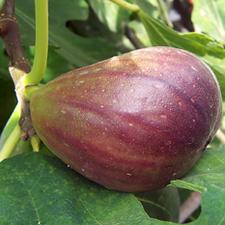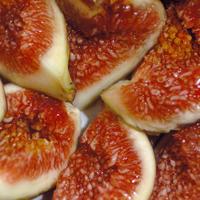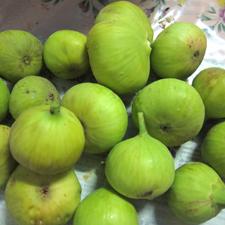Figs



Foods Included
Black Mission Figs, Adriatic Figs (white figs), Brown Turkey Figs, Calimyrna Figs, Kadota Figs, Figs Fresh, Figs Dried
Description
Figs are a soft sweet fruit, with a very thin outer skin and an inside full of small seeds. Figs range in color and texture. With over one hundred and fifty kinds of figs, the most popular varieties include:
- Black Mission: blackish-purple skin and pink colored flesh
- Kadota: green skin and purplish flesh
- Calimyrna: greenish-yellow skin and amber flesh
- Brown Turkey: purple skin and red flesh
Buy It
Figs should be purchased only a day or two in advance of when you are planning on eating them. Look for figs that have a rich, deep color and are tender, without any bruises.
Store It
Fresh Figs should be kept refrigerated and can be stored between 5 and 7 days. Figs can be frozen in a sealed bag or container for up to 6 months.
Cook It
- Wash figs with cool water.
- Remove the stem and gently wipe dry the figs.
- Figs can be then eaten as a whole or added to oatmeal or any other whole grain breakfast or to a fennel salad.
Why It's Great
Figs are a good source of:
- Dietary fiber which helps in digestion and helps prevent constipation.
- Vitamin B6 which helps the body make antibodies which our body needs to fight diseases.
- Potassium which is mineral that helps the heart, kidneys, and other organs work normally.
Try It

“Funded by USDA SNAP, an equal opportunity provider and employer. Visit http://calfreshhealthyliving.org for healthy tips.”
